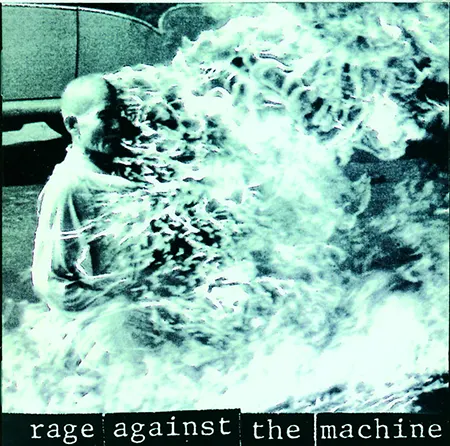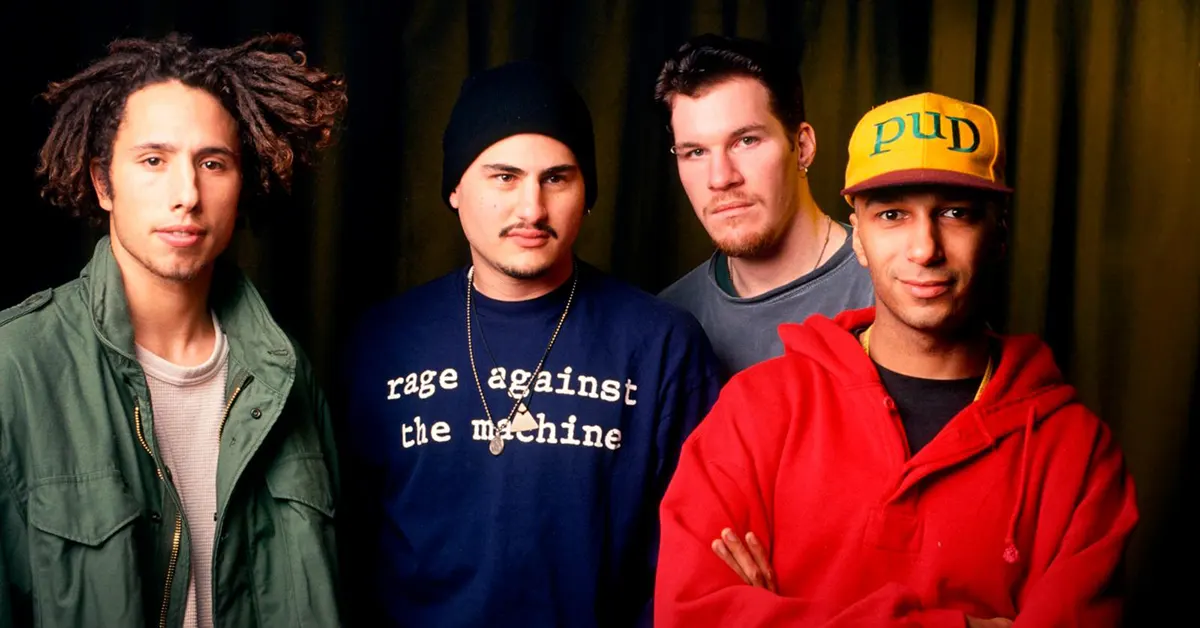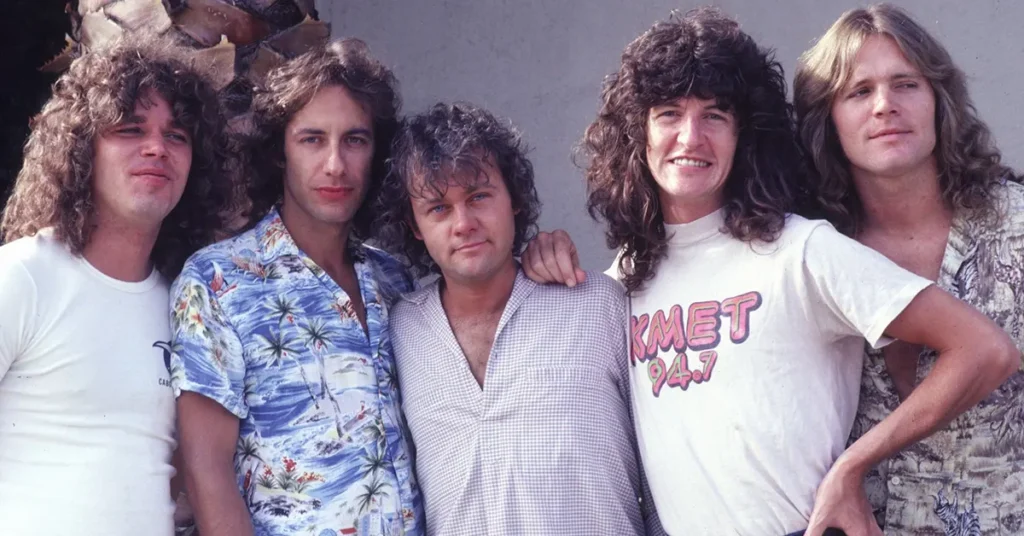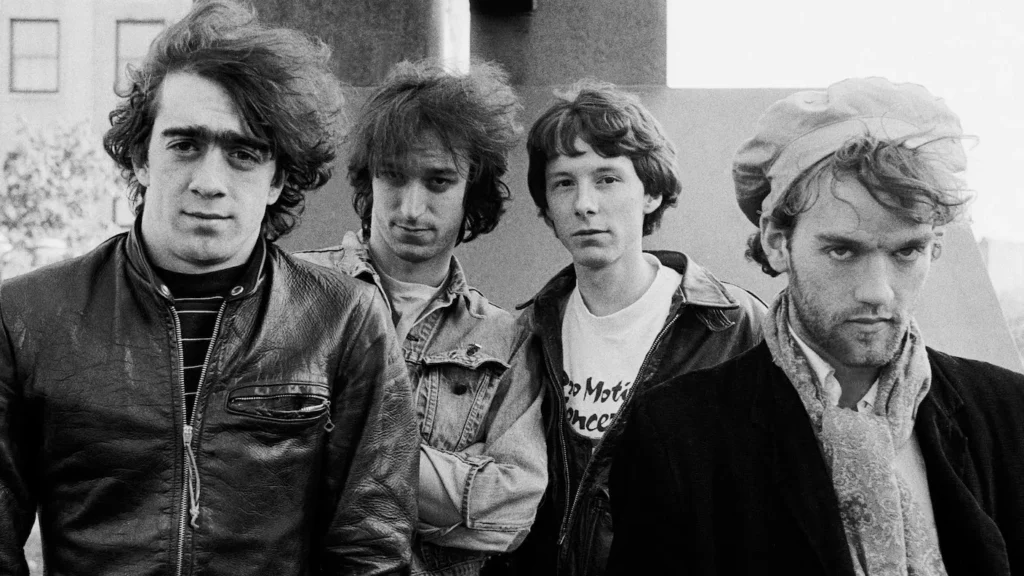Rage Against the Machine: Revolutionaries of Rap Metal and Resistance
I. Formation and Background
Formed: 1991
Origin: Los Angeles, California
Members:
- Zack de la Rocha – Vocals, lyrics
- Tom Morello – Guitar
- Tim Commerford – Bass, backing vocals
- Brad Wilk – Drums
The band formed when Zack de la Rocha, a hardcore punk veteran with deep roots in social activism, teamed up with Tom Morello, a Harvard-educated guitarist known for unorthodox sounds and effects. Along with Commerford and Wilk, they created a band whose music was as militant as its message.
The name “Rage Against the Machine” came from de la Rocha’s earlier band, symbolizing resistance against systemic oppression, including capitalism, imperialism, racism, and police brutality.

II. Explosive Debut: Rage Against the Machine (1992)
Released in November 1992, their self-titled debut was a sonic and political bombshell. The cover featured the iconic photo of the self-immolation of Thích Quảng Đức, a Buddhist monk protesting the South Vietnamese government in 1963.
Key tracks:
- “Killing in the Name” – A blistering indictment of police brutality and racism; its climactic chant “F* you, I won’t do what you tell me**” became a generational rallying cry
- “Bullet in the Head” – Critiques media mind control
- “Wake Up” – Tackles FBI repression and Black political movements (famously featured in The Matrix)
- “Freedom”, “Take the Power Back”
The album combined:
- Morello’s revolutionary guitar techniques (mimicking DJs, sirens, and turntables)
- De la Rocha’s venomous spoken-word/rap delivery
- A rhythm section steeped in funk, groove, and aggression
It went platinum and laid the groundwork for the rap metal and nu-metal boom of the late ’90s — though few could match its authenticity.
III. Political Message and Activism
Rage was not just a band; it was a movement:
- Advocated for Zapatistas in Mexico, Mumia Abu-Jamal, anti-globalization protests, and more
- Refused to censor lyrics or compromise on values
- Played free benefit concerts, and used liner notes to publish radical literature
- Performed in front of the New York Stock Exchange in 2000, prompting shutdowns
- De la Rocha often gave speeches from the stage, turning concerts into calls to action
IV. Evil Empire (1996): Chart-Topping Protest
Their second album debuted at #1 on the Billboard 200, solidifying Rage as major-label radicals.
Notable tracks:
- “Bulls on Parade” – Guitar mimics a turntable; attacks militarism and consumerism
- “People of the Sun” – Celebrates indigenous resistance in Mexico
- “Down Rodeo” – Tackles class and racial inequality in L.A.
- “Vietnow” – Media brainwashing and conservative radio
- “Year of tha Boomerang” – Revolutionary solidarity
The album’s title and artwork mocked American consumerism and imperialism, with the band often performing at political protests and rallies.
V. The Battle of Los Angeles (1999): Rage in Full Force
Released at the end of the millennium, this third album may be their tightest and most musically refined work.
Key tracks:
- “Guerrilla Radio” – Grammy-winning single
- “Sleep Now in the Fire” – Critique of American greed; video directed by Michael Moore, filmed on Wall Street
- “Testify” – Mass media manipulation
- “Born of a Broken Man,” “Calm Like a Bomb” – Poetic and searing
The band seemed at their peak — both artistically and politically. But internal tensions loomed.
VI. Breakup and Renegades (2000–2007)
In October 2000, Zack de la Rocha left the band, citing political and creative differences. The remaining members soon formed Audioslave with Chris Cornell of Soundgarden.
✦ Renegades (2000)
- A covers album of politically charged songs by:
- Bob Dylan, Cypress Hill, Devo, MC5, Eric B. & Rakim, and The Rolling Stones
- Showed their influences and commitment to activism through reinterpretation
Meanwhile, Rage’s legacy grew. Their songs became protest anthems in movements against war, globalization, and corporate control.
VII. Reunions and Recent History (2007–Present)
The band reunited in 2007 for Coachella, launching a series of powerful performances but no new studio albums.
Highlights:
- 2009 Battle of Britain campaign: “Killing in the Name” was voted UK Christmas #1 to sabotage Simon Cowell’s dominance
- Played major festivals and activist events worldwide
- Announced a world tour for 2020, which was postponed due to COVID
- In 2022, returned with high-energy performances, but de la Rocha was injured, halting the tour
Though touring has paused again, Rage remains culturally and politically relevant.
VIII. Musical Style and Impact
Rage Against the Machine fused:
- Heavy metal riffs
- Hip-hop rhythms and rhymes
- Funk grooves and punk urgency
- Radical political theory (influences: Chomsky, Zinn, Marx, Malcolm X)
Tom Morello redefined rock guitar with non-traditional sounds using:
- Whammy pedals, feedback loops, toggle switches
- DJ-like scratching and siren effects — all with a guitar, no samples
Their sound influenced:
- Linkin Park, System of a Down, Audioslave, Run the Jewels, Prophets of Rage
- Sparked the rap-metal and nu-metal scenes — though few matched their depth and sincerity
IX. Legacy and Honors
- Inducted into the Rock and Roll Hall of Fame (2023)
- “Killing in the Name” and “Bulls on Parade” are generational anthems
- Their lyrics continue to appear in protests, classrooms, and cultural essays
RATM is one of the only bands to become mainstream rock stars while openly advocating for revolution.
Their impact spans music, politics, and youth culture — inspiring people to not just listen, but act.
X. Interesting Facts
- Their debut album had no overdubs — all performances were captured live
- Rage rarely gave interviews or released traditional music videos early on
- Tom Morello once worked for U.S. Senator Alan Cranston, combining politics and art
- Zack de la Rocha has collaborated with Trent Reznor, El-P, KRS-One, and more
- Their songs were used in The Matrix, Tony Hawk’s Pro Skater, and countless protest documentaries





